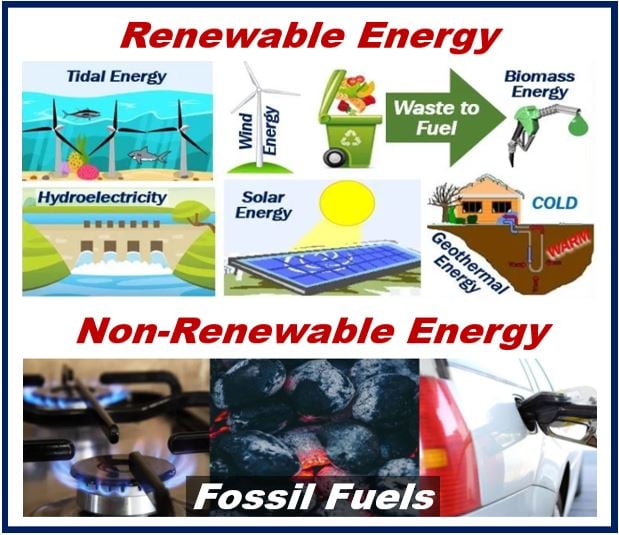Sustainable Energy refers to energy produced from sources that can be used repeatedly and are not in danger of expiring or being depleted.
Two key components
There are two key components of sustainable energy; renewable energy and energy efficiency. They are considered to be the “twin pillars” of sustainable energy policy.

Renewable energy
Renewable energy refers to energy collected from renewable resources, such as sunlight, wind, rain, tides, waves, and geothermal heat. These sources of energy are naturally replenished and almost inexhaustible in duration.
Energy efficiency
Energy efficiency refers to reducing the amount of energy required to power products and services. This can be achieved by means of a more efficient technology or process. For example, modern energy efficient refrigerators use about 40 percent less energy than those of 2001.
Renewable energy vs. sustainable energy
Although renewable energy and sustainable energy appear in similar articles and conversations, their meanings are not the same.
Renewable energy goes on and on and on, it never runs out. However, it might not be sustainable if it damages the environment.
For example, we could focus on fast growing trees and replacing forests with new ones, thus, using wood to heat our homes. This would be a reliable type of renewable energy. However, the carbon emissions from burning wood would be high. Forests, therefore, are not a source of sustainable energy.
Solar energy, on the other hand, does not contribute to global warming. We could keep using it for hundreds of years without raising global temperatures or harming the environment. Solar energy is both renewable energy and sustainable energy.
It’s important to ensure that renewable energy sources are used in environmentally and economically sustainable ways to truly consider them as part of a sustainable energy strategy.
Put simply, sustainable energy is environmentally friendly and renewable.
Renewable energy technologies
Renewable energy technologies have developed in three main stages:
• First-generation technologies came about during the industrial revolution in the late 1800s. These include things like hydropower (water power), burning biomass (like wood), and geothermal energy. Many of these are still used today.
• Second-generation technologies are more modern and include solar panels, wind power, solar heating, and updated forms of bioenergy. These are now common in many parts of the world.
• Third-generation technologies are still being developed. These include advanced ideas like concentrated solar power, wave and ocean energy, enhanced geothermal systems, and high-tech bioenergy setups. They’re the future of clean energy, but not yet widely used.
Green energy and green power
Green energy comes from sources that are naturally replenished. Natural sources that produce green energy include wind, rain, tides, sunlight, algae, and geothermal heat. These green energy sources are reducing our dependence on fossil fuels (coal, oil, and natural gas).
Demand for green energy depends a lot on its cost. As the cost of green energy drops, demand for it will rise.
According to a 2018 Forbes article citing a report from the International Renewable Energy Agency (IRENA), “the cost of renewable energy is dropping so fast that it should be a consistently cheaper source of electricity generation than traditional fossil fuels within just a few years.”
As technology progresses, the increased affordability of green energy solutions is expected to further accelerate the transition from traditional energy sources.
